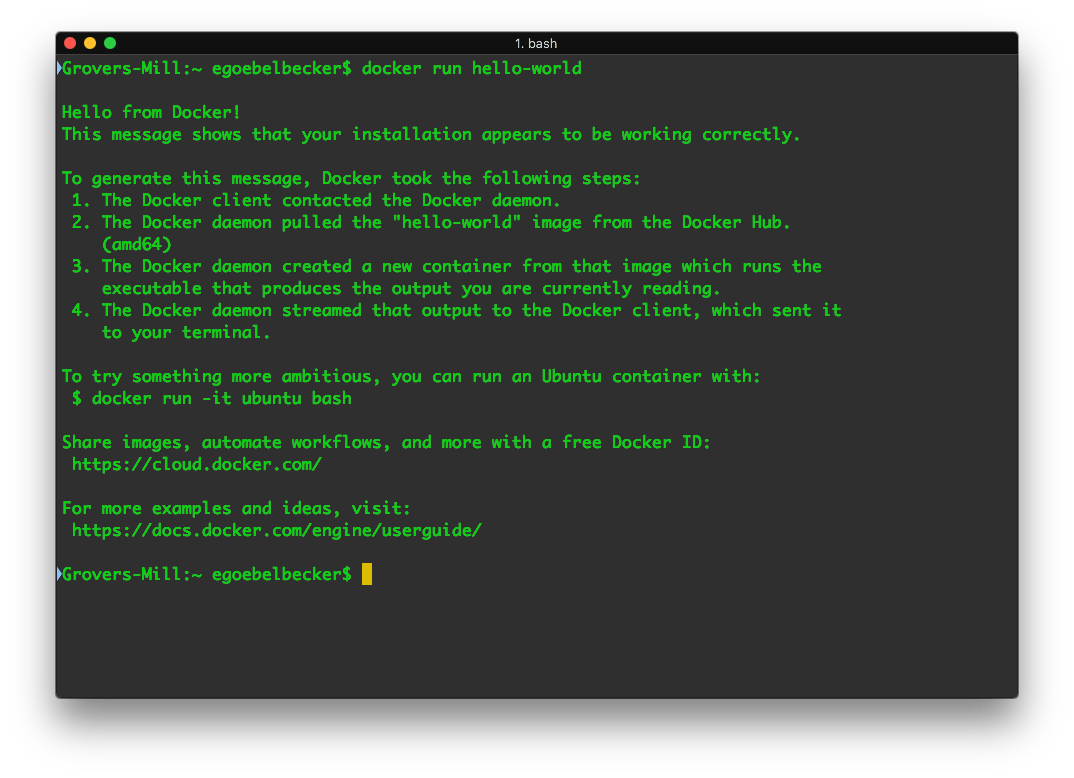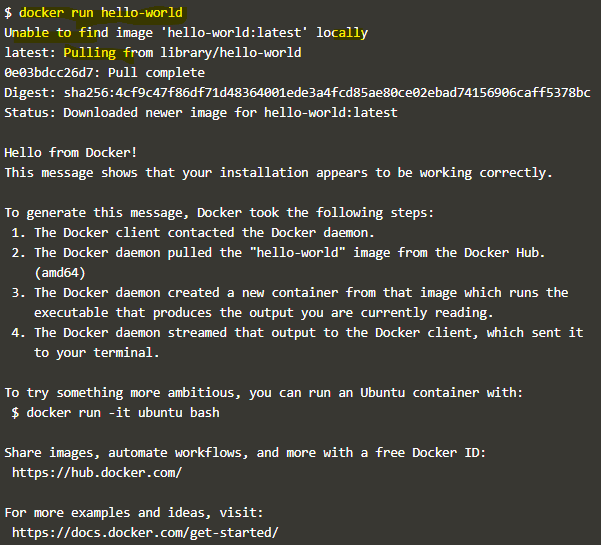


DOCKER RUN IMAGE AND DAEMON HOW TO
That’s it! In this article, we have shown how to run a Docker container in the background in detached mode. Here’s how to check whether Docker’s daemon is up so you can diagnose issues with containers and the docker command. CLI commands won’t work and your containers will usually go offline if the daemon stops. Supported tags and respective Dockerfile links alpine-3.4 (alpine-3.4/Dockerfile) alpine-3.6 (alpine-3. Docker uses a daemon-based architecture where the CLI connects to a long-lived process running separately on your machine or a remote host. Do not use it on the Production Environment, please. WARNING: This docker image can be access with ssh by chusiang/ansible-jupyter image. How to Remove Docker Images, Containers and Volumes A Docker image of run the OpenSSH daemon and Python for Ansible.How to Name or Rename Docker Containers.
DOCKER RUN IMAGE AND DAEMON INSTALL
Install Docker and Learn Basic Container Manipulation in CentOS and RHEL 7/6 – Part 1.You might also like to read these following related Docker articles. If you want to stop the above container or any other running container, use the following command (replace 301aef99c1f3 with the actual container ID). In addition, to reattach to a detached container, use docker attach command. To list all containers, run the following command (default shows just running). First, stop it from the foreground mode by pressing, then run it in a detached mode as shown: # docker run -d -rm -p 8000:80 -p 8443:443 -name pandorafms pandorafms/pandorafms:latest controlled by this Docker containers Docker daemon to mount data from Jenkins. To run a Docker container in the background, use the use -d=true or just -d option. A Docker container is in effect a running instance of a Docker image. Which means you can not run any other commands while the container is running. The disadvantage of running a container in the foreground is that you can not access the command prompt anymore, as you can see from the screenshot above. We can also digitally sign the Images, so if someone tries to run a container using an unsigned image, the daemon is not going to start the container. This example shows how to start a Docker container in foreground mode: # docker run -rm -ti -p 8000:80 -p 8443:443 -name pandorafms pandorafms/pandorafms:latest Importantly, the -rm option tells Docker to automatically remove the container when it exits. You can also attach it to one or more file descriptors ( STDIN, STDOUT and/or STDERR) using the -a= flag. There are also command line options to configure it more such as -t to allocate a pseudo-tty to the process, and -i to keep STDIN open even if not attached.


 0 kommentar(er)
0 kommentar(er)
